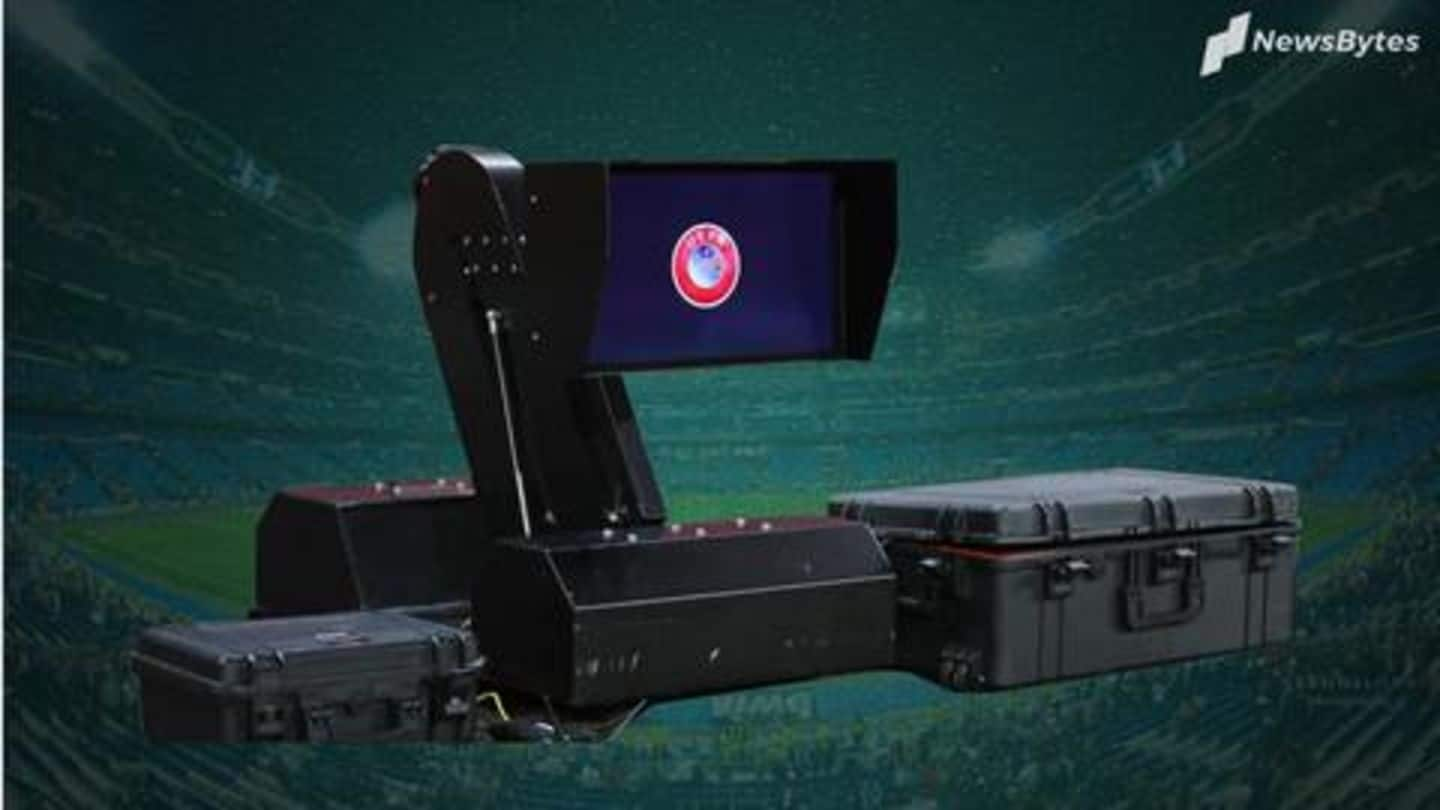
#NewsBytesExplainer: How does Video Assistant Referee (VAR) work in football?
What's the story
Football is one of the most followed sports, across the world. With this roots in the second and third centuries BC, the sport has evolved a lot. Furthermore, as the technology has progressed, the game too has become modernized. One of the notable technologies the sport dons nowadays is the Video Assistant Referee (VAR). Here, we explain how it works.
VAR
What is VAR?
As the name suggests, the VAR assists the on-field referees to make the right decisions. They are people who monitor and analyze all the happenings on the football field through a video monitor. Upon analysis, the VAR communicates the decision to the on-field referee to take the right decision, as this technology helps in keeping the game clean.
History
History of VAR
The history of the VAR dates back to 2010 when Royal Netherlands Football Association started work on it. It was put into trial during the 2012-13 Eredivisie season. Since then, the technology has vastly improved. It has been slowly and steadily implemented across football tournaments, while it is mandatory in all major international competitions, including the FIFA World Cup.
Do you know?
Where is the VAR located?
As for the location of the VAR, it is not on the field. The VAR is in a separate room, generally at the headquarters of the broadcaster, from where people reviews all the action on their screens and communicate to the referee via an ear-piece.
Step 1
Step 1: On-field referee calls for VAR check following incident
The opening procedure involves the on-field referee calling for a check by the VAR official, following an incident on the field, which may involve penalty, foul check, hand-ball among other things. However, it is to be noted that the call for the VAR only relies with the on-field referee, unlike the players calling for it in other sports.
Step 2
Step 2: The VAR checks the incident and reviews decision
Upon the call by the on-field referee, the VAR is alerted and prompted to check the particular incident. The VAR uses multiple camera angles for the best possible view and upon a careful review, a decision is made. There is also an assistant VAR, who keeps a tab on the happenings on the field, which, if needed, could be reviewed later.
Step 3
Step 3: Decision is communicated to the on-field referee
As for the final step, it involves the decision being communicated to the on-field referee. While the on-field referee can instantly give the decision provided by the VAR, or he/she could also proceed to check the same on a separate monitor by the sidelines (if available). Following this, the referee can also overturn his original decision.
Final decision
Final decision lies with on-field referee
It is also to be noted that the VAR can also come into play without the on-field referee's prompt, when it comes to off-side or if the foul had occurred inside or outside the box. However, the power to make the final call relies upon the on-field referee, who, if needed, can ignore the VAR's verdict.
Criticism
Criticism continues as technology still in works
However, all technologies have drawbacks, as VAR too has been on the receiving end. In most of the cases, VAR has been dubbed 'confusing' and many believe that it lacks clarity. Also, its consistency has been challenged, especially in the Premier League this season, where several close-calls have been made and managers, including players and fans, have expressed their displeasure.